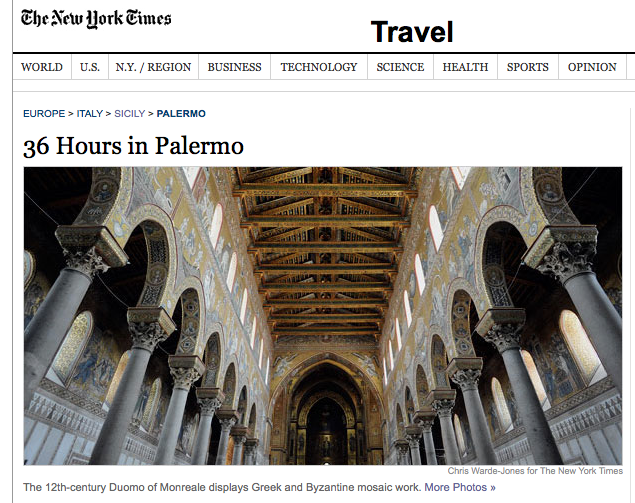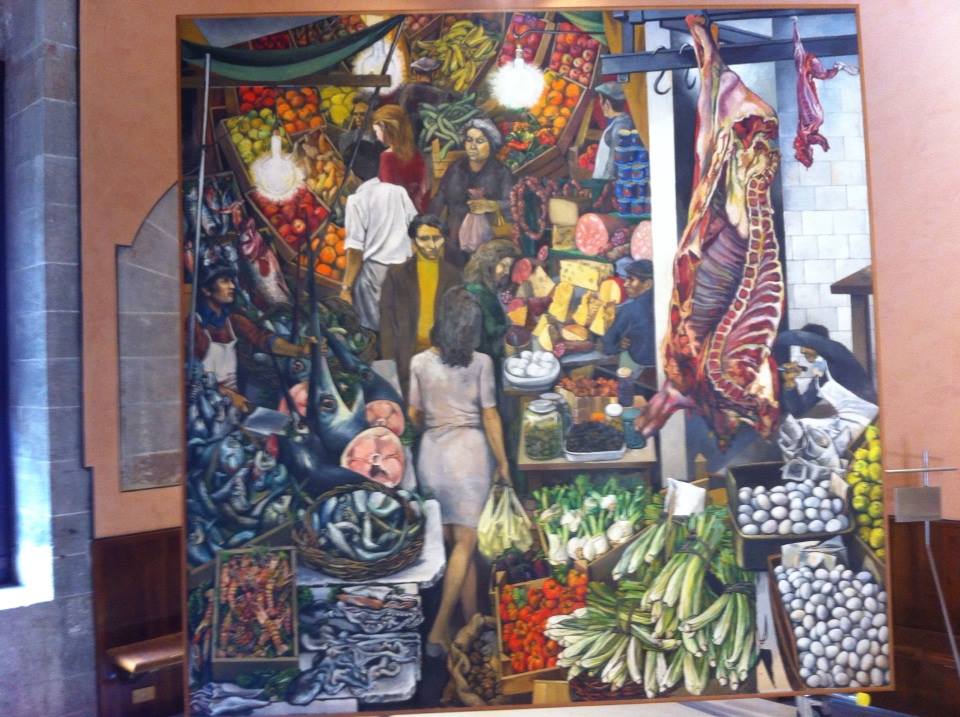qualitas1998.net |
Palermo - General Information
Weather
Usually weather in Palermo in early April is sunny with temperature around 20°C. Check personally the weather forecast.How to get to Palermo from the Airport
If you wish to use this service, prior to your departure reserve your car by email at: spadatransferinsicily@hotmail.it.
The transfer time from Palermo’"Falcone e Borsellino" airport to the city center takes about 40 minutes. Please note that this is an estimated transfer time and does not take into account traffic and road conditions.
Cheaper ways to reach out the city are below:
Bus (to Palermo) Prestia & Comandé, Frequency: every half hour (4.00 am-11.00 pm) One way ticket: € 6.10 Phone: 091 586 351
Train (to Palermo): Trinacria Express Train, Frequency: every half hour (4.45 am-12.40 pm) One way ticket: € 5,50 Phone: 091 704 40 07.
Sicily and Palermo
Sicily was voted “the best destination in the world” in 2009 and second “best island” in 2010 by readers of Condé Nast Traveller. The largest island in the Mediterranean, and largest region in Italy, Sicily is packed with things to see and places to go, so you shouldn’t expect to “do” it all in one go. The island has 5 million inhabitants and hosts an enormously varied and important cultural heritage. Palermo is a 2,700 years old city with about 600,000 inhabitants.Entirely built in front of the sea, it has gone through Phoenician, Roman, Arab, Norman, German, Spanish, French and Italian domination which resulted in a unique mix of cultures well reflected by the magnificent cultural heritage of the city.
Testifying to this are the different urban strata that have changed the face of the city over the centuries. The city's name derives from the Greek and means "all port", to indicate the width of the approach and the importance of this trading post. In fact, Palermo was founded by the Phoenicians, probably in the eighth century BC. Fortified and surrounded by defensive walls, in the fifth century BC it became the most important Carthaginian stronghold on the island.
 After the Roman
conquest, the
barbarian invasions and
Byzantine domination, then under the Arabs, who arrived in 831, Palermo
became the capital of the autonomous emirate of Sicily and one of the
busiest emporia of the Mediterranean. In the successive Norman period,
the work of Byzantine, Arab and Latin craftsmen again transformed the
architectural and urban fabric of the centre and the whole province, as
the beautiful Palatine chapel and the Monreale cathedral testify.
Finally, between the sixteenth and seventeenth century a new period of
reconstruction occurred, that enriched the churches, palaces and
monuments.
After the Roman
conquest, the
barbarian invasions and
Byzantine domination, then under the Arabs, who arrived in 831, Palermo
became the capital of the autonomous emirate of Sicily and one of the
busiest emporia of the Mediterranean. In the successive Norman period,
the work of Byzantine, Arab and Latin craftsmen again transformed the
architectural and urban fabric of the centre and the whole province, as
the beautiful Palatine chapel and the Monreale cathedral testify.
Finally, between the sixteenth and seventeenth century a new period of
reconstruction occurred, that enriched the churches, palaces and
monuments.
«The essential charms of this mysterious and intoxicating city -- has written has written Ariel Forman in The New York Times -- thankfully remain intact.
«The current face of this modern metropolis of the South is that of a mighty and mysterious city, enclosed in the labyrinth of Arabian lanes, in the magnificence of palaces and sanctuaries, in art treasures, in the charm of natural scenery, and in the unchanging values of ancient craft and food tradition».
Language
The official language of the conference will be English. No simultaneous translation will be provided.Passport and Visas
All non-residents of the EU are required to have a valid passport.Participants should check regarding visa requirements for travel to Italy. Applications should be made to the nearest Italian Embassy or Consulate as soon as possible. Citizens of member states of the European Union and the USA do not need visas.
 Insurance
and Liability
Insurance
and Liability
Participants are advised to arrange whatever insurance they consider
necessary. No responsibility can be assumed by the
Congress for personal accidents, sickness, theft, or property damage
suffered by the participants.
Electricity
The electrical current is 220 volts, 50 Hz.Banking
Bank hours are Monday - Friday 8:30 - 13:30 and 15:45 - 16:30. Bank are closed on Saturdays and Sundays.Currency
Since the beginning of 2002 the Euro is the official currency in Italy.1 Euro = 100 Cents.
Coins: 1, 2, 5, 10, 20, 50 Cents; 1, 2 Euros
Banknotes: 5, 10, 20, 50, 100, 200, 500 Euros.
The Euro is usually abbreviated as EUR. The symbol of the Euro is €;.
Money can be changed at the airport, at banks, exchange bureaus, and larger hotels. For a cash advance, credit cards and Maestro-cards can be used at cash dispensers (Bancomat) which are available all over the city.
Shopping
Typical shopping hours are Monday to Saturday 9:00 - 13:00 and 16:30 - 20:00. Apart from some tobacconists and small supermarkets at petrol stations and at the main railway stations, shops are closed on Sundays. Luxury shops with an elegant clientele can be found in city downtown (via Libertà, via Ruggiero Settimo and via Maqueda).Back to the Home-Page